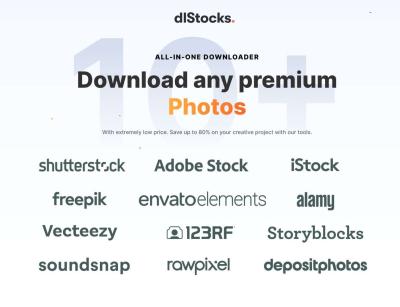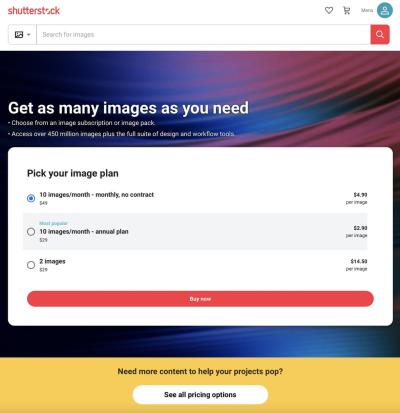If you’re an illustrator looking to turn your passion into profit, Shutterstock might just be the platform for you. It’s a popular marketplace where creators upload their artwork, and businesses, marketers, or individuals buy licenses to use those images. But how much can you really earn from your illustrations? The answer varies depending on several factors like the quality of your work, how often you upload, and the demand for your style. In this post, we’ll explore how Shutterstock‘s contributor program works, what you can expect in terms of earnings, and tips to maximize your income from your illustrations.
Understanding Shutterstock’s Contributor Program and Payment Structure

Shutterstock‘s contributor program is designed to make it straightforward for artists and photographers to sell their work. Once you sign up and get approved, you can start uploading your illustrations to the platform. But how do you get paid? Let’s break down the key points:
How the Payment System Works
- Revenue Share: Shutterstock operates on a royalty-based system. Every time someone downloads one of your illustrations, you earn a percentage of the sale.
- Pricing and Downloads: The amount you earn depends on the type of license purchased (Standard or Enhanced) and your lifetime earnings with Shutterstock.
- Payment Threshold: You can request a payout once your earnings reach $35. Payments are made via PayPal or bank transfer, depending on your preference.
Royalty Tiers and Earnings
Shutterstock has a tiered royalty system that rewards contributors as they earn more:
| Lifetime Earnings | Royalty Rate |
|---|---|
| $0 – $500 | 15% |
| $500 – $2,000 | 20% |
| $2,000 – $5,000 | 30% |
| Over $5,000 | 40% |
This means that as you upload more high-quality illustrations and increase your sales, your earning percentage can grow, boosting your overall income.
Additional Tips to Maximize Earnings
- Upload Consistently: The more illustrations you add, the higher your chances of making sales.
- Focus on Quality and Trends: Stay updated with current design trends and create versatile, high-quality images.
- Optimize Metadata: Use relevant keywords and descriptions to help buyers find your work easily.
In summary, Shutterstock offers a fair and transparent way for illustrators to monetize their work. While earnings can vary, understanding how the program works and leveraging its features can help you increase your income over time. So, if you’re ready to showcase your illustrations to a global audience, Shutterstock might be the perfect platform to start or grow your digital art business.
Factors Influencing Your Earnings from Illustrations
When it comes to earning money from your illustrations on Shutterstock, there’s no one-size-fits-all answer. Your income can vary widely depending on a bunch of different factors. Let’s break down some of the key elements that can influence how much you earn:
Quality of Your Illustrations
First and foremost, the quality of your artwork matters. High-quality, professional-looking illustrations tend to sell better and attract more buyers. Think about clarity, attention to detail, color harmony, and originality. The more polished and unique your work is, the more likely it will stand out in a crowded marketplace.
Quantity and Consistency
It’s often said that “quantity has a quality all its own.” The more illustrations you upload, the higher your chances of making sales. Regular uploads also keep your portfolio fresh and visible to potential customers. Consistency helps build your reputation as a reliable contributor, which can lead to more downloads over time.
Keyword Optimization and Tagging
Properly tagging and keywording your illustrations make a huge difference. Think about what buyers might search for when looking for images like yours. Use relevant, specific keywords and avoid spammy tags. Well-optimized images are more likely to appear in search results, increasing your chances of earning commissions.
Market Demand and Trends
Some styles or subjects are more popular at certain times. Staying up-to-date with current trends can help you create illustrations that are in demand. For example, during certain seasons or events, themed illustrations (like holiday graphics or business icons) may sell more.
Pricing Strategy
While Shutterstock sets the base prices, how you price your work and whether you participate in exclusivity agreements can impact your earnings. Higher quality and more exclusive content can often command higher prices, but it’s also important to balance quality with quantity and market demand.
Licensing and Usage
Shutterstock offers different licensing options, like standard and enhanced licenses. The type of license purchased affects your payout. Illustrations that are licensed for broader use or commercial purposes tend to generate higher earnings.
Contributor Level and Recognition
As you upload more and gain a reputation, you might be eligible for higher contributor levels, which can come with increased earning potential. Being a recognized contributor can also lead to featured placements, which boosts your visibility and sales.
Tips to Maximize Your Income as an Illustrator on Shutterstock
If you’re serious about boosting your earnings, here are some practical tips to help you get the most out of your illustrations on Shutterstock:
Focus on Niche Markets
- Identify underserved niches or trending topics.
- Create specialized illustrations that cater to specific industries or themes.
- By targeting niches, you face less competition and can establish yourself as an expert.
Maintain a Consistent Upload Schedule
Regularly adding new illustrations keeps your portfolio active and more visible. Set a manageable goal—whether it’s weekly, bi-weekly, or monthly—and stick to it. Over time, this consistency can lead to more steady sales.
Optimize Your Keywords and Titles
Spend time researching the best keywords and crafting clear, descriptive titles. Use tools like Google Trends or Shutterstock’s own search bar to find popular search terms. Remember, good metadata helps your images get found.
Create High-Quality, Versatile Content
Invest in improving your illustration skills and tools. Create versatile images that can be used in multiple contexts—websites, print, social media. The more adaptable your illustrations are, the broader their appeal.
Participate in Promotions and Challenges
Shutterstock occasionally runs contributor contests or promotions. Participating can increase your visibility and lead to more downloads. Keep an eye on the contributor dashboard for opportunities.
Engage with the Community and Keep Learning
Join forums, social media groups, or online communities of Shutterstock contributors. Sharing experiences and tips can inspire new ideas and help you stay motivated. Also, continuously learn new techniques or styles to keep your portfolio fresh and competitive.
Offer Unique and Original Work
Stand out from the crowd by creating original illustrations that aren’t just copies of popular trends. Originality can lead to higher sales and recognition, especially if your work resonates well with buyers looking for something fresh.
Monitor Your Performance and Adjust
Use Shutterstock’s analytics tools to see which images sell best. Focus on creating more of what works and phasing out less popular pieces. Adjust your keywords and tags based on what’s trending or performing well.
By paying attention to these factors and implementing these tips, you can significantly boost your income from Shutterstock illustrations. Remember, patience and persistence are key—building a successful portfolio takes time, but with dedication, you’ll see your earnings grow.
Common Challenges and How to Overcome Them
Jumping into the world of Shutterstock illustrations can be exciting, but it’s not without its hurdles. Many artists face similar challenges along the way, and knowing how to tackle them can make your journey smoother and more enjoyable.
1. Standing Out in a Crowded Marketplace
With thousands of talented illustrators uploading every day, getting noticed can feel overwhelming. The key here is to develop a unique style or niche that sets you apart. Spend time exploring trending topics and see where your creativity fits best. Customizing your portfolio to highlight your strengths and consistency can also help attract the right clients.
2. Maintaining a Steady Stream of Quality Work
Consistent uploads are crucial for building visibility and earning potential. However, creating high-quality illustrations regularly can be challenging, especially if you’re balancing other commitments. To overcome this, establish a realistic schedule, prioritize projects, and don’t be afraid to batch-produce content during your most creative times.
3. Staying Up-to-Date with Trends and Client Demands
The design world evolves rapidly. What’s popular today might be outdated tomorrow. Keep an eye on industry trends by following design blogs, social media, and Shutterstock’s trending sections. Learning new techniques and tools can also broaden your skill set, making your illustrations more appealing to a wider audience.
4. Navigating Copyright and Licensing Issues
Ensuring your illustrations comply with copyright laws is essential. Use only original work or assets you have rights to, and clearly understand Shutterstock’s licensing policies. When in doubt, consult resources or legal advice to avoid potential disputes that could harm your reputation and income.
Overall, facing challenges head-on with a proactive mindset will help you grow as a Shutterstock illustrator. Remember, persistence, continual learning, and a passion for your craft are your best tools for overcoming obstacles and turning your illustrations into a sustainable income stream.
Real-Life Success Stories of Shutterstock Illustrators
Nothing is more inspiring than hearing from real artists who turned their passion into profit on Shutterstock. Let’s explore a few stories that showcase what’s possible with dedication and a bit of creativity.
Meet Lisa, the Niche Specialist
Lisa started illustrating pet-themed artwork because she loved animals and noticed a gap in the stock marketplace. By focusing on a specific niche, she built a strong portfolio of unique, high-quality illustrations. Within a year, her work started appearing in major campaigns, earning her over $10,000 in her first 12 months. Her secret? She stayed consistent, engaged with the community, and kept refining her style based on client feedback.
John’s Journey from Hobbyist to Pro
John was initially creating illustrations as a hobby, sharing his work on social media. He decided to upload his best pieces to Shutterstock, where he quickly gained traction. By analyzing popular trends and adapting his style, he managed to secure regular commissions. Today, John earns a comfortable side income, and his work has been featured in international publications. His advice? Stay persistent and be open to learning from every upload.
Emma’s Multi-Platform Strategy
Emma diversified her income by not only focusing on Shutterstock but also expanding to other platforms like Adobe Stock and iStock. She also offered custom illustrations directly to clients, which boosted her earnings. Emma emphasizes the importance of building a strong personal brand and engaging with her audience through social media. Her story proves that diversification and networking can significantly increase your earning potential.
These stories show that success on Shutterstock isn’t just about talent; it’s about strategy, persistence, and continuously improving your craft. Whether you’re just starting or looking to scale your income, these real-life examples can motivate you to keep pushing forward. Remember, every successful illustrator was once a beginner—your journey is just beginning, and with dedication, you too can turn your illustrations into a thriving income source.
Conclusion and Final Tips for Boosting Your Earnings with Illustrations on Shutterstock
In summary, earning from Shutterstock with your illustrations can be a rewarding venture if approached strategically. While the potential income varies depending on factors such as the quality of your work, consistency, and marketing efforts, many contributors have successfully built a steady revenue stream. To maximize your earnings, it’s essential to optimize your portfolio by submitting high-quality, original illustrations that meet trending demands. Keep an eye on popular themes and styles to stay relevant in the marketplace.
Here are some final tips to help you boost your earnings:
- Consistently upload new content to keep your portfolio fresh and increase visibility.
- Research trending topics and styles to create illustrations that buyers are actively searching for.
- Use relevant keywords and tags to improve discoverability in Shutterstock’s search results.
- Engage with the Shutterstock community and participate in forums or feedback sessions to stay informed and motivated.
- Maintain high quality and originality to stand out from the competition and attract repeat buyers.
Remember, success on Shutterstock requires patience and persistence. By consistently refining your skills and marketing your work effectively, you can turn your passion for illustration into a sustainable income source. Stay motivated, keep learning, and leverage the platform’s features to maximize your earning potential.


